Traditional Dal Makhani (Restaurant Style Homemade Dal Makhani)
Delicious Dal Makhni
Dal Makhni is a popular submissive dish from North India, known for its rich and delicate flavor. It’s made with lentils, primarily whole black lentils( urad dal) and red order sap( rajma), cooked sluggishly in a tomato- grounded sauce and finished with cream and adulation. The dish is generally spiced with a mix of sweet spices, giving it a distinct and infectious taste. Dal Makhni has a history that dates back to the Punjab region of India, where it was traditionally prepared as a slow-braised dish that needed hours of stewing on low heat. It was frequently reserved for special occasions and fests due to its indulgent flavors and uproariousness.
Over the times, Dal Makhni has gained wide fashionability and is now enjoyed in colorful corridor of India and beyond, both in homes and caffs. If we want to double the taste then we can serve green chutney with this punjabi dal makhani.
For best results always use homemade coriander powder and garam masala in dal makhani. These spices will enhance the flavor.
The slow- cuisine process and the addition of cream and adulation towards the end of cuisine give Dal Makhni its hand satiny texture and luscious taste. Dal Makhni is generally served hot with rice, naan( Indian chuck
), or roti( Indian flatbread), making it a stuffing and satisfying mess. It’s frequently garnished with cilantro( coriander leaves) or cream on top for added flavor and donation. Dal Makhni is loved by insectivores and non-vegetarians likewise for its rich and comforting flavors, and it continues to be a popular and favored dish in Indian cookery.

Traditional Dal Makhni
This Dal Makhani form is a eatery style interpretation with subtle hoarse flavors and creaminess of the lentils. If you love authentic Punjabi food also you’re going to love this Dal Makhani indeed more. Dal makhani garnished with coriander leaves and served in a fancy bobby pail with textbook stopovers.
x0 seconds of 0 seconds
For this form, I’ve used a pressure cooker to cook the lentils, but I’ve explained the system of cooking the lentils in a visage or pot in the notes section of the form card. I’ve also participated my expert tips and constantly asked questions by our compendiums on this form below. In the FAQ section below, I also partake the system of making this dal makhani in the Instant Pot.
Why this form works
Before I list out and explain to you the beauty of this form, let me tell you that this Dal Makhani form is one of our most reviewed and loved form on the blog. It has been made by numerous of our compendiums and they’ve loved it. It also happens to be my most participated form on social media. So what makes this form so good and why is it one of the stylish Dal Makhani form.
Whole spices Ambrosial and sweet whole spices make this Dal Makhani more scrumptious. In my trial with this dish before, I flash back making dal makhani without whole spices numerous times and hoping to get eatery like taste and flavors in the lentils. But it noway matched and my trials continued.
I born in Punjab and since I grew, in my home I saw this traditional dish has been made every night. I formerly set up a black cardamom and clove in their dal makhani. I allowed may be it’s the black cardamom and clove giving that lovely aroma and flavor. later I tested dal makhani numerous times adding whole spices and realized that they do add a good flavor and faint aroma to the dish. But I still felt commodity was lacking.
Adulation and cream and adulation make a big difference. therefore I kept on experimenting and when I was testing the form of Dal Bukhara, I realized it was the cream and adulation giving a rich taste, piecemeal from the slow cuisine. The uproariousness in the dish comes from the fats in the adulation and cream. The quantum of adulation and cream added isn’t riotous and just enough to lift the dish in its uproariousness.
You could still make dal makhani with lower adulation and cream. Just flash back to decelerate cook it for longer ages of time, to get the real deal.
Slow cooking
The further slow cooked dal makhani is the better it tastes. In utmost Indian caffs specializing in authentic North Indian food, Dal Makhani is coddled overnight or for numerous hours. principally you can call it slow cuisine of the lentils. This slow cuisine makes a world of difference to the thickness of the lentils. The lentils are slow cooked in a tandoor. The tandoor is a spherical shaped roaster made of complexion.
The fire in the tandoor comes from lit watercolor or wood. Overnight stewing of the dal makhani gives some smokiness in the dish from the watercolor or wood. In utmost Indian homes you won’t find tandoor. But you’ll fluently find a pressure cooker. The fastest way to cook the lentils are in a pressure cooker. In this post, I’ve used a cookstove-top pressure cooker, but you can cook the lentils in an Instant Pot too.
I’ve cooked the lentils & sap in a pressure cooker for about 30 twinkles. latterly I’ve slow cooked them on a low heat for 25 twinkles. You can decelerate chef for further time than what I’ve done. Slow cuisine makes the lentils thick, delicate and the end result is a cutlet- shellacking dal makhani.
Hoarse flavors( voluntary) For that eatery style taste hoarse aroma and flavor is the key. Like I mentioned above the hoarse aroma in the dal makhani comes from slow stewing and cooking dal makhani on rustic or watercolor fires or embers.
To replicate this smokiness in the dish, I’ve two tried and tested styles for you. Watercolor invested bank This is also called as Dhungar in Hindi language. It’s a watercolor smoking fashion. It works fabulously for any form where you need some hoarse flavor.
The dal makhani smoked with this system tastes exactly like the eatery one. The dhungar smoking fashion is voluntary and you can just skip if you can not get watercolor. Use smoked paprika Using smoked paprika is the easiest system and especially great when you can not get watercolor.
Just replace the red chilli greasepaint in the form with smoked paprika. I’ve added smoked paprika so numerous times to dal makhani to get that hoarse flavor. Dal makhani served in a small and taken in a ladle on a dark blue board Two further analogous Punjabi fashions that you can make with black gram are Kaali Dal( Punjabi maah ki dal) and Amritsari Dal( langarwali dal).
Way To Cook
Soak both ¾ cup whole urad dal (whole
black gram) and ¼ cup rajma (kidney beans) overnight in enough water for 8 to 9
hours. Drain them well.- The below photo shows the soaked whole urad dal .
- Rinse the urad lentils and rajma
legumes a couple of times in water.
- Take a pressure cooker & put the Black Dal then add pour enough water.
- Add salt and then pressure cook for 4-5 whistles on medium flame.
- Pressure cook for 18 to 20 whistles on a high flame, till both the whole urad dal and rajma have cooked thoroughly and softened. If they are not cooked, then add about ½ cup water again and pressure cook for 4 to 5 whistles more.
- Now get ready the masala with chopped onion, tomato, ginger, garlic & green chilli.
- Take a fry pan & pour oil / butter & add shahi jeera (cumin).
- Add garlic & cook for 2 sec, then put onion, tomato, ginger & green chilli.
- Add salt, black pepper, red chilli powder, coriander powder & garam masala.
- Stir-fry over medium flame, till the oil separate.
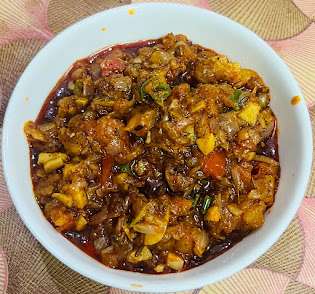
- Add cooked dal & bring to boil. The consitsency should be such that the dal should move around freely when stirred, otherwise add a little water.
- Leave dal on medium flame for 10-12 mins.
- After cooked, we put the whole dal in a bowl and pour some coriander leaves & a slice of butter, It’ll give a yummy taste and everyone will ask you this recipe.
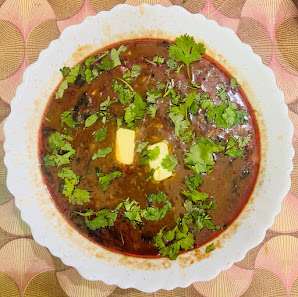
- Serve dal with lacha paratha and have fun.
Expert Tips
·
Soaking: For any kind of dried whole beans or dried peas it is always helps to soak them overnight or for 8 to 9 hours. Soaking beans reduces the phytic acid which causes indigestion and flatulence thereby makes them more digestible. Soaking also helps the beans to cook faster.
·
Rinsing: Before cooking, rinse the soaked beans in water a couple of times. Then drain all the water and cook the beans with fresh water. Doing this also reduces the phytic acid.
·
Cooking: When you soaking beans and lentils the cooking time considerably reduces by 25%. You can then cook the soaked beans in a pan or in a pressure cooker or instant pot.
·
Freshness of lentils: Beans & legumes should be fresh and not aged. Beans which are too old or beyond their expiry date (shelf-life) will take a lot of time to cook and perhaps not cook well enough to give a melt in the mouth texture. Undercooked beans upset the stomach too.
·
Tomatoes: Tomatoes are an important ingredient in this recipe. You could use canned tomatoes too or packaged tomato puree (1 cup). For fresh tomatoes, choose the sweet and ripe variety. Do not add highly sour or tart tomatoes.
·
Dhungar method: The smoking method can be skipped too if you do not have charcoal. If you have smoked paprika, then use it in place of red chilli powder in the recipe to get a faint smoky flavor.
FAQs
Q. Can we cook the lentils in a pot or pan?
A. Yes, you can cook lentils in a pot pan on the stovetop. Cooking them in a pan will take about 45 minutes to 1 hour or more.
Soak lentils overnight and then cook them covered with enough water in a deep pot. Add a few drops of butter or oil so that the water does not froth much while boiling the lentils.
Q. What can I substitute if I do not have whole urad dal?
A. You can use split urad dal with the husks. You can also use beluga lentils (black lentils), whole red lentils (masoor dal) and whole moong lentils.
The taste with all these lentils will be different. The closest taste you can get is with split urad dal with their black skins.
Q. Can I make this recipe without onion and garlic?
A. Yes, you can easily make dal makhani without onion and garlic. You just need to add a generous pinch of asafoetida (hing) after the whole spices crackle and before adding ginger paste.
Q. Which oil can I use for the dhungar method?
A. You can use any neutral tasting oil. You can even use sunflower oil, safflower oil or peanut oil. You can even add ghee (clarified butter).
Q. By low-fat cream what do you mean?
A. Low-fat cream has 25% fat content. If you live in the United States, you can use light cream or half and half. You can also add 2 tablespoons of heavy whipping cream.
Q. How can I make this recipe in the the Instant Pot?
A. Melt the butter using the sauté mode of the instant pot. Add the whole spices and let them crackle. Then add the onions and sauté till light golden.
Add the ginger-garlic paste and sauté for a few seconds. Add the tomato puree and sauté for 3 to 4 minutes.
Add the red chilli powder and nutmeg powder. Stir and mix. Add the lentils and 2.5 cups water. Pressure cook on high for 30 minutes. Wait for natural release.
Lift the valve and remove the lid. Use the sauté option and simmer till the consistency thickens.
Mash a few lentils with a spoon while stirring. Keep on stirring so that the lentils do not stick to the pot. Lastly add the cream and kasuri methi.
Q. Is nutmeg powder essential for this recipe?
A. No you can skip it easily.
Q. Can I add garam masala powder?
A. Garam masala powder is not required in this recipe as the whole spices give a really
good flavor. But if you do not want to use whole spices, then add garam masala
powder (about half a teaspoon) at the step when kasuri methi is added.
Q. What can be used for smoky flavor instead of charcoal or smoked paprika?
A. One of our readers had given this suggestion. If you can get access to dried mexican peppers, then try getting morita peppers.
They are similar to chipotles in that they are smoked jalapeno peppers, but these are smoked with a different method that leaves them with that fresh charcoal flavor.
As a bonus, since they are less harshly dried, it leaves them with a nice fruity pepper flavor that blends very well with the tomatoes.
Q. Do I need to crush black cardamom and green cardamom a bit before I fry them in butter?
A. There is absolutely no need to crush them. Just add them whole. If you crush them, the crushed black cardamom will give a strong aroma in the dal makhani.
Q. Can I soak the lentils for 3 to 4 hours and will there be any difference in the cooking time?
A. You can soak the lentils for 2 hours but soak them in very hot water. You can soak the lentils in warm or medium hot water for 3 to 4 hours. The cooking time will be more if the lentils are aged.
Q. Can I scale the recipe up and make a big batch?
A. Yes of course you can scale and make a large batch of the recipe.
Q. Is it necessary to add cream?
A. Cream balances the earthy flavor of the lentils and the tanginess of the tomatoes. It also gives a rich taste. So to get a restaurant style taste, cream needs to be added. But you can skip the cream if you do not have it.
Q. Can I use curd (yogurt) instead of the cream?
A. You can use curd, but just add about 2 tablespoons of whole milk yogurt.
Q. How long can I store the dal makhani in the fridge and how do I serve it later?
A. Dal makhani stays good in the refrigerator for 1 to 2 days. You can freeze it for 1 to 2 weeks. Reheat while serving and add water if the consistency looks looks very thick. Add cream and butter while serving.
Enjoyed this recipe? Then try our Other Main Course Recipes
Please be sure to rate the recipe in the recipe card or leave a comment below if you have made it. For more veetarian inspirations, Sign Up for my emails or follow me on Instagram, Youtube, Facebook or Pinterest .
Dal Makhni Recipe Card
Equipments
Ingredients
Produce
- 1 cup Black lentil, whole
- ¾ teaspoon Red Chilli
- 1 Onion, medium(Finely chopped(65gms))
Canned Goods
- 1 cup Toamto (chopped)
Condiments
- 1 teaspoon Ginger(chopped)
- 1 teaspoon Garlic(chopped)
Baking & Spices
- 1 teaspoon Garam Masala
- ½ teaspoon Corriender leaves
- 2 teaspoon Salt
Dairy
- 3 tablespoon Butter
- 1 teaspoon Ghee
Liquids
- 8 cups Water
Other
- ¼ cup Rajma((red kidney beans) (optional))
Instructions
- Preparation1.Soak both the whole urad dal and rajma overnight in enough water for 8 to 9 hours or overnight. Later drain them well.2.Rinse both the lentils a couple of times in water.3.Drain again and then add them in a 3 litre pressure cooker. Add water and stir well.4.Pressure cook for 18 to 20 whistles on a high flame, till both the urad dal and rajma have cooked thoroughly and softened. If they are not cooked, then add about ½ cup water again and pressure cook for 4 to 5 whistles more.5.The urad dal should melt in the mouth and should not give any bite or resistance when eaten. You can also just mash the urad dal with a spoon or with your fingers to check the doneness. The same rule applies for rajma too. Keep the cooked beans aside.6.In a blender or mixer jar, take chopped tomatoes and blend to a smooth puree. Set aside.7.You can also add ready 1 cup tomato puree instead of blending the tomatoes. No need to blanch the tomatoes while pureeing.Making Dal Makhani8.In a pan, now heat butter. You can use salted butter or unsalted butter.9.Add the whole spices – cumin seeds, cloves, green cardamoms, black cardamom, 1 inch cinnamon, 1 small to medium tej patta.10.Fry for some seconds till the spices sputter and become aromatic.11.Add finely chopped onions.12.Stir and sauté the onions on a low or medium-low heat often till they become light golden.13.Add the ginger garlic paste. Stir again and sauté for some seconds till the raw aroma of ginger-garlic goes away.14.Add the chopped green chilies and sauté for a minute.15.Add the prepared tomato puree and mix well.16.Add red chili powder and 2 to 3 pinches of grated nutmeg or nutmeg powder.17.Stir very well and sauté this mixture on a low to medium flame, till you see fat releasing from the sides.18.Then add the cooked urad dal and rajma beans along with the stock. Also add 1 cup water or as required.Slow Cooking19.Stir very well and simmer the dal makhani uncovered on a low flame.20.Keep on stirring often, so that the lentils don’t stuck to the bottom of the pan.21.Once it has begun to thicken, add salt as required.22.Stir very well and continue to simmer on a low flame. Keep on stirring when the lentils are simmered on low heat.23.When simmering you can add more water if the gravy looks thick or dry. The longer you keep dal makhani to simmer, the better it tastes.24.I kept it for about an overall 25 minutes on a low flame. Do keep on stirring at intervals.25.When the gravy has thickened enough, then add cream. Dal makhani is not too thick or too thin. It has a medium consistency.26.Mix the cream very well. Then switch off the heat.27.Add crushed kasuri methi (dried fenugreek leaves). Mix again.28.Cover and set dal makhani aside, if you are proceeding to the dhungar method. Or else you can serve dal makhni straight away.29.Immediately keep this bowl on top of the dal makhani.30.Cover for a minute and allow the charcoal to infuse its smoke in the dal makhni. Remove the bowl. Stir again.Serve punjabi dal makhani garnished with chopped coriander leaves (cilantro) and a few teaspoons of cream with naan, roti, paratha or steamed rice.
Notes
- Cooking in pot or pan: Add the the soaked black gram, kidney beans and 3 to 4 cups water in a large pot. Cover and cook on medium heat till the lentils and beans soften. Add water as needed. If cooking the beans in a pot, it may take from 45 minutes to 1 hour.
- Soaking: It is always better to soak beans overnight or for 8 to 9 hours. Soaking reduces the phytic acid in them which causes indigestion and flatulence. Soaking also helps the beans to cook faster.
- Rinsing: Before cooking, rinse the soaked beans in water a couple of times. Then drain all the water and cook the beans with fresh water.
- Cooking: When you soaking beans and lentils the cooking time considerably reduces by 25%. You can then cook the soaked beans in a pan or in a pressure cooker or instant pot.
- Freshness: Beans & legumes should be fresh and not aged. Beans which are too old or beyond their expiry date (shelf-life) will take a more time to cook and may not cook well enough to give a melt in the mouth texture. Undercooked beans upset the stomach too.
- Tomatoes: Tomatoes are an important ingredient in this recipe. You could use canned tomatoes too or packaged tomato puree (1 cup). For fresh tomatoes, choose the sweet and ripe variety. Do not add highly sour or tart tomatoes.

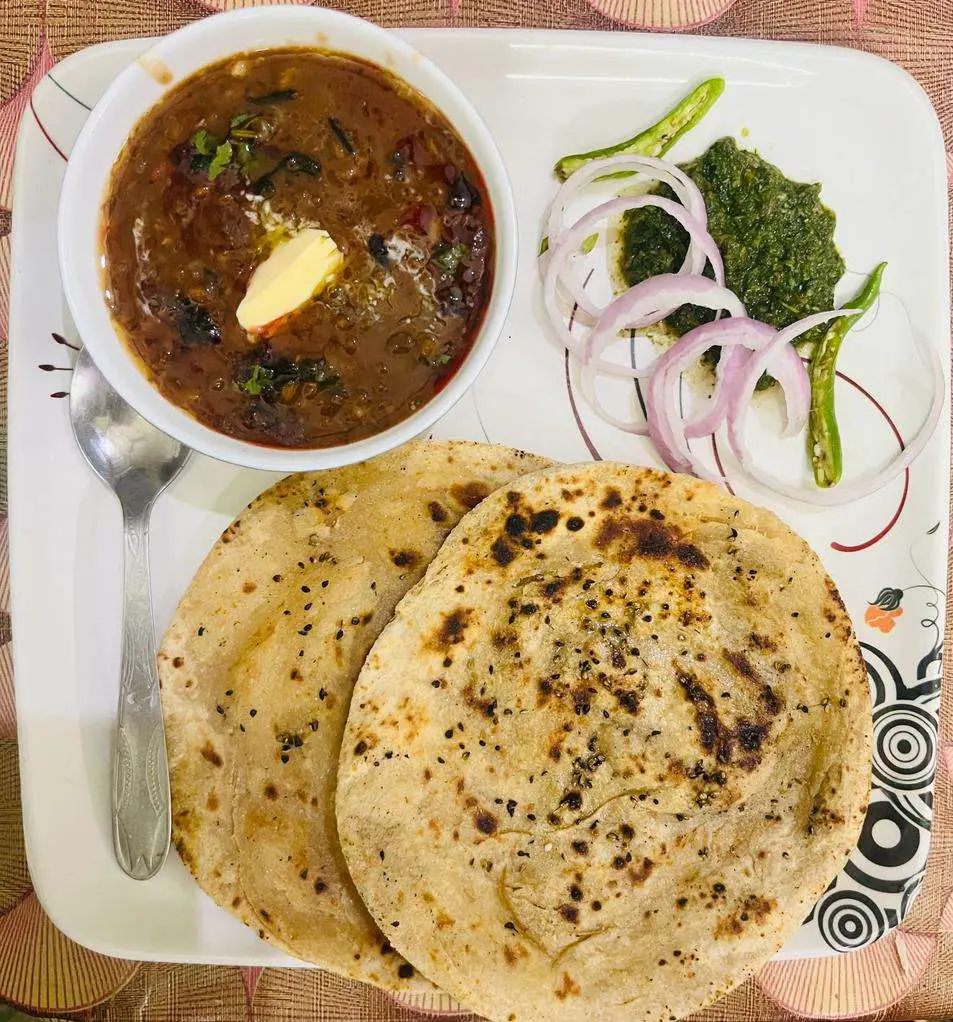
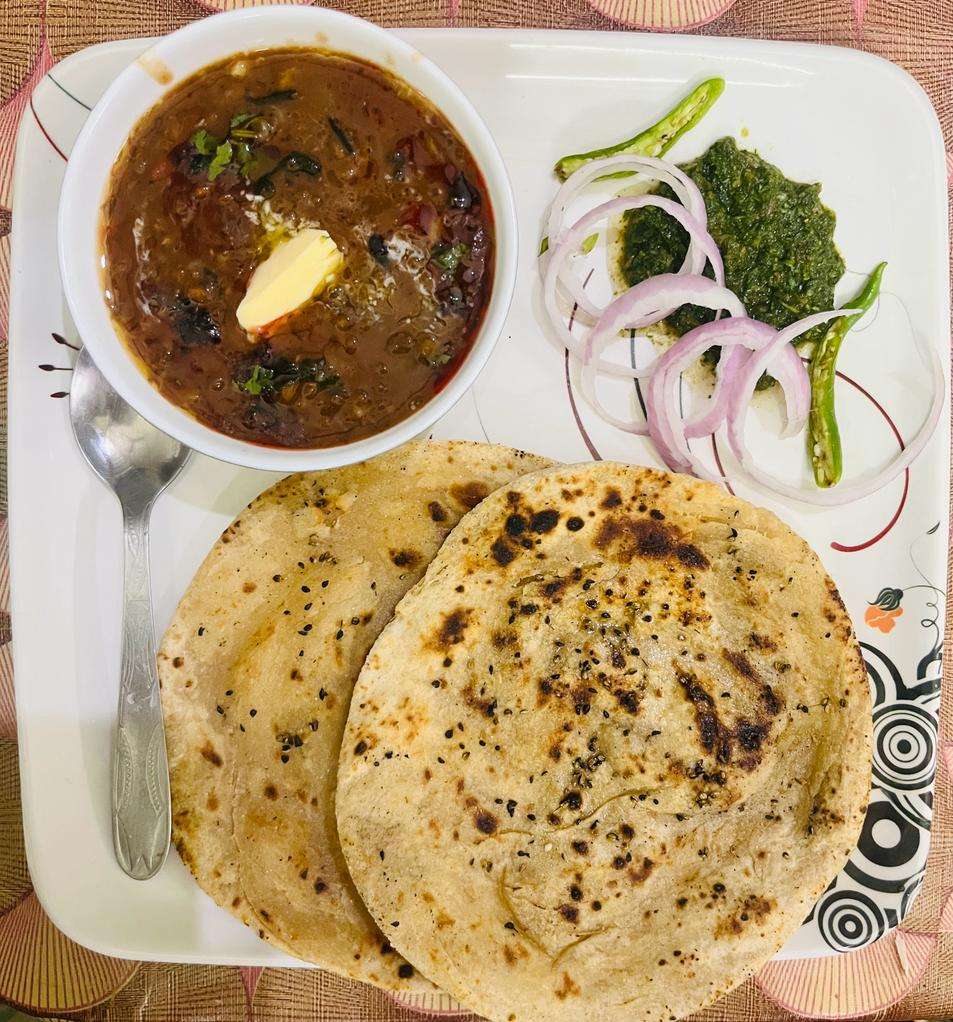
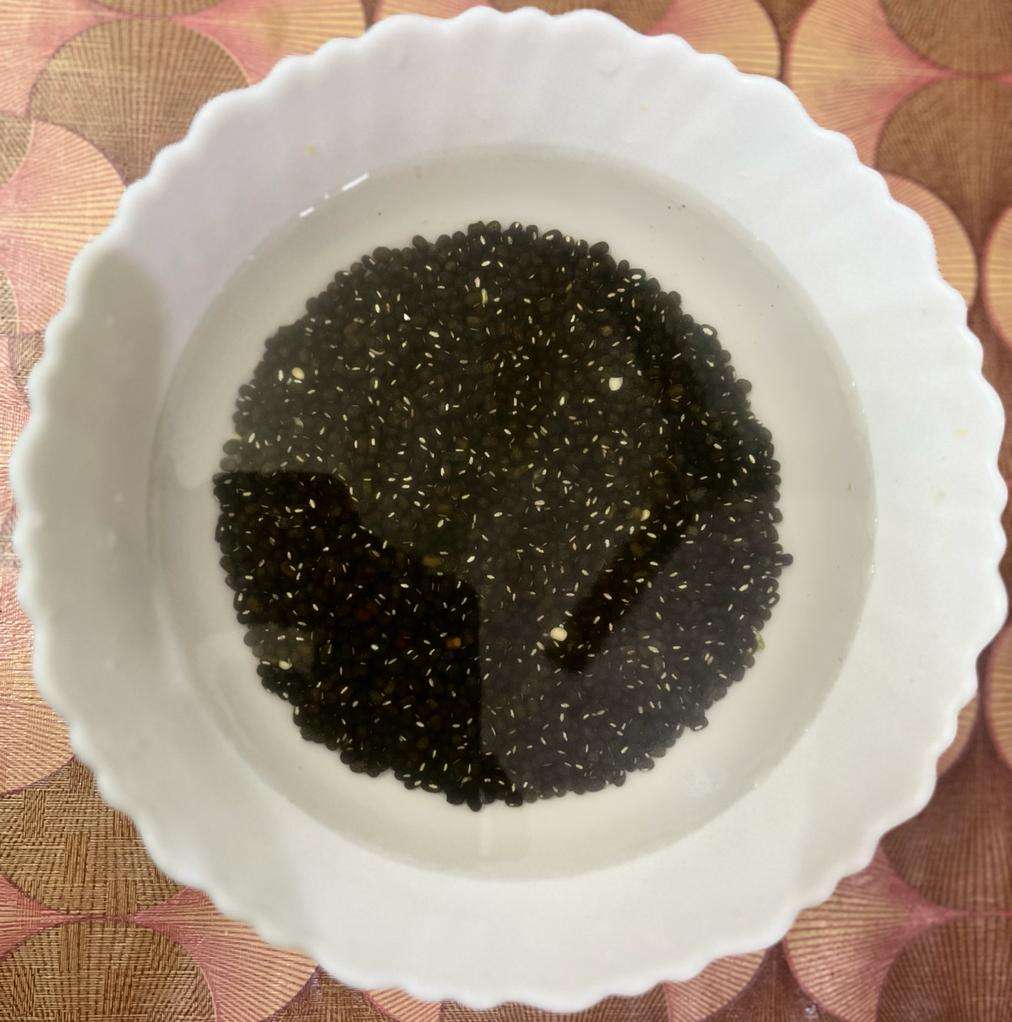
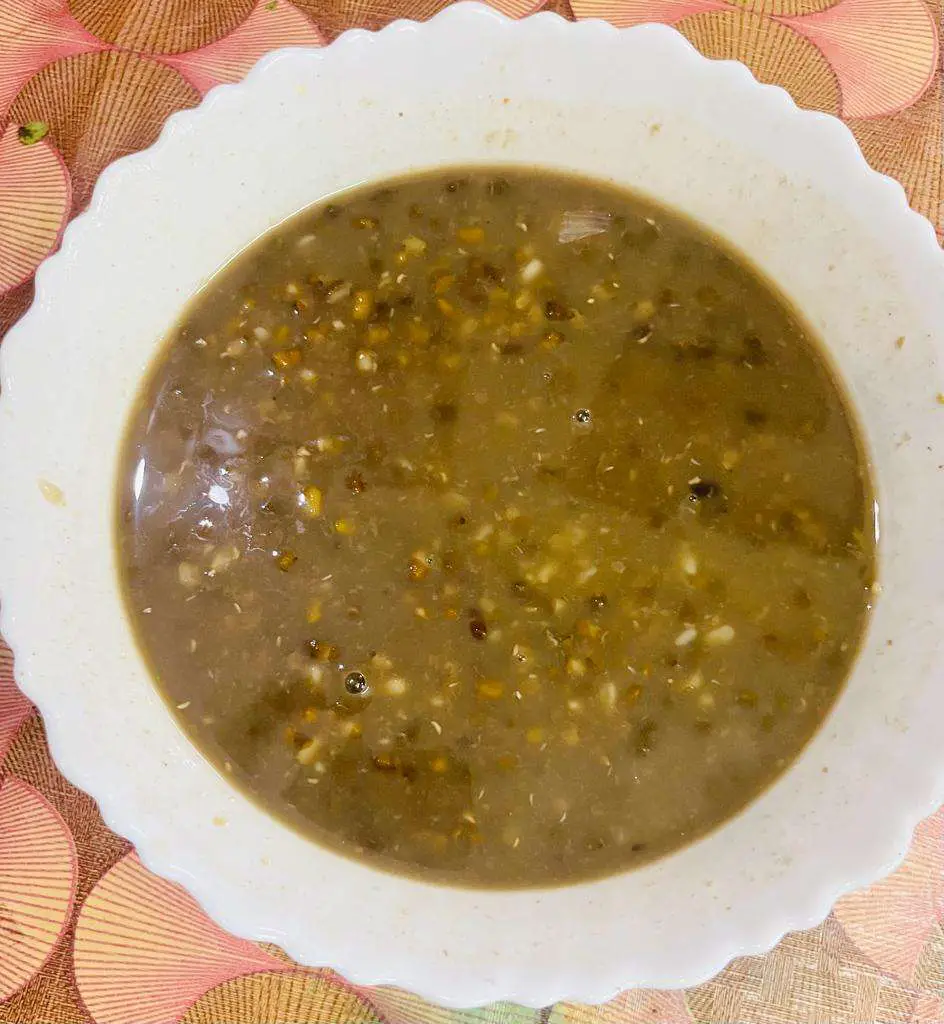
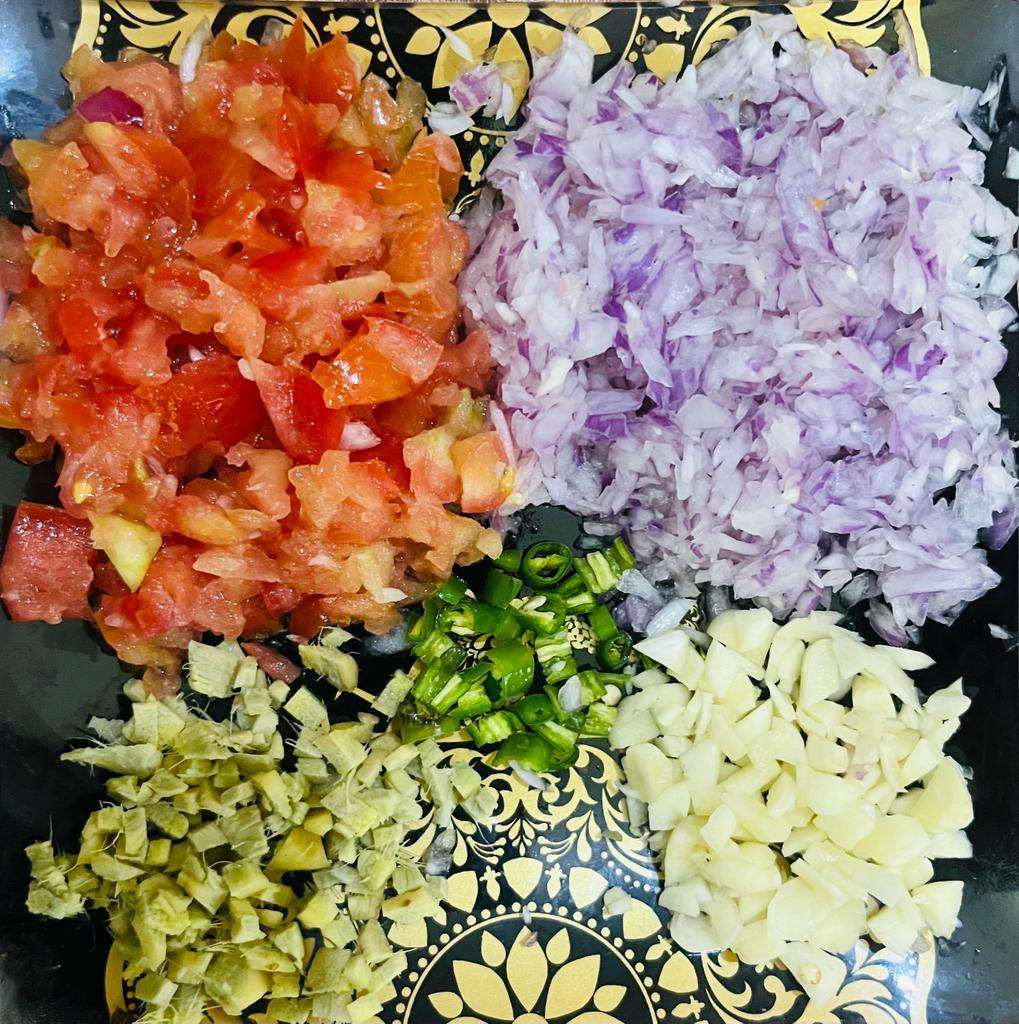
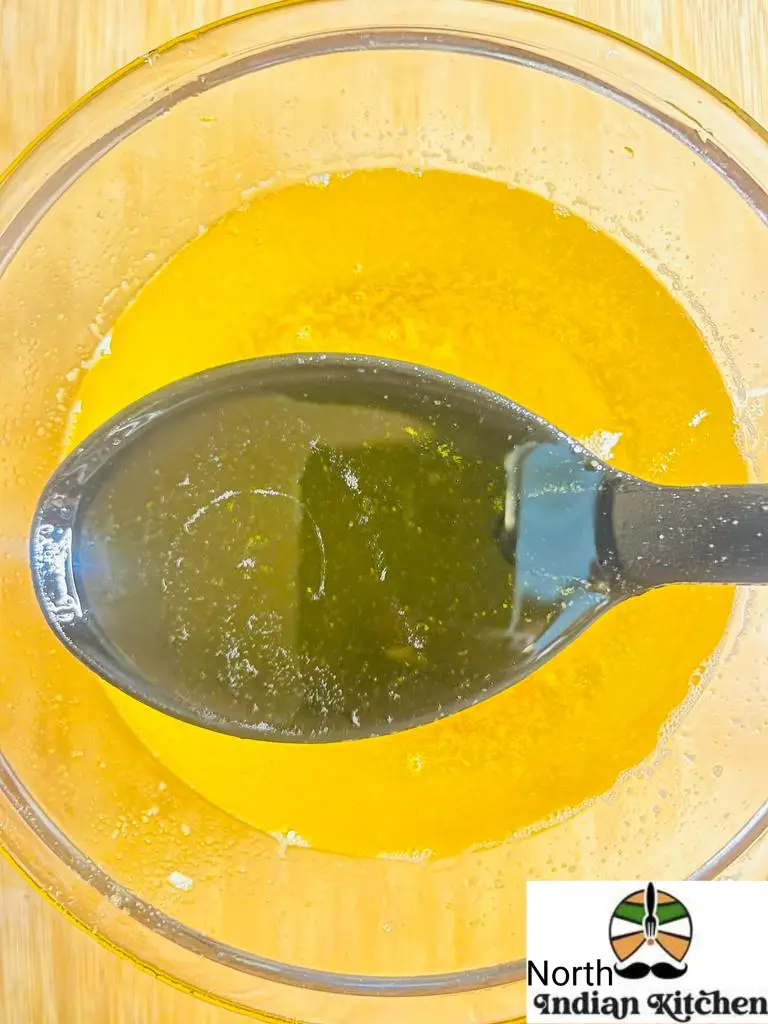


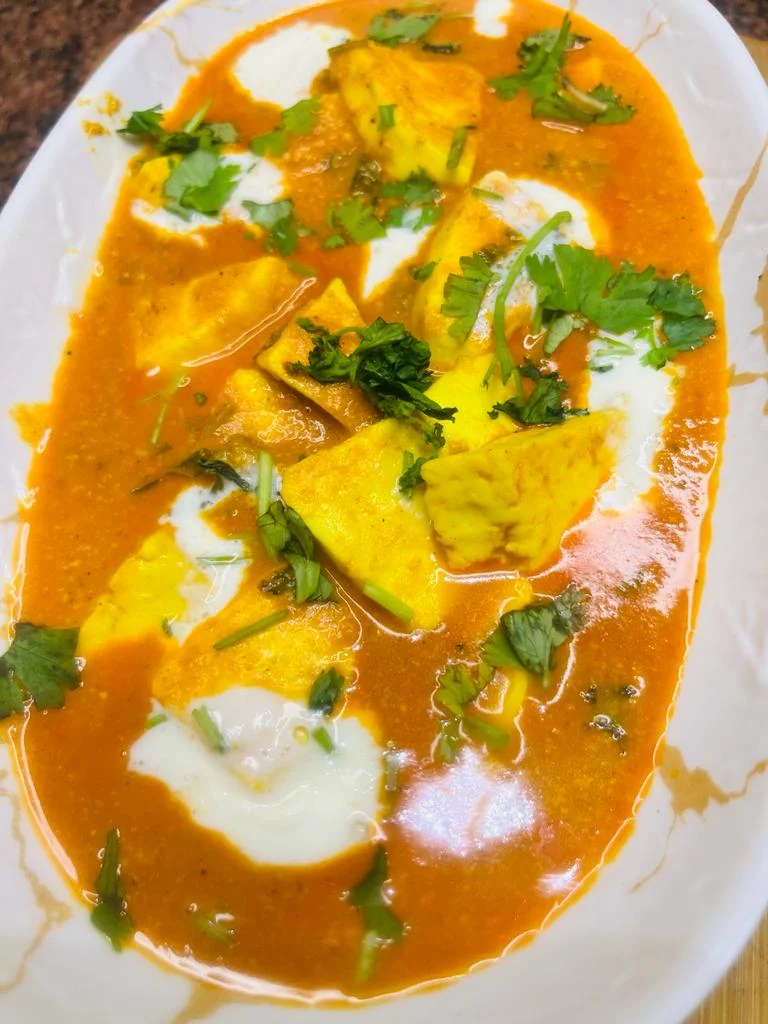

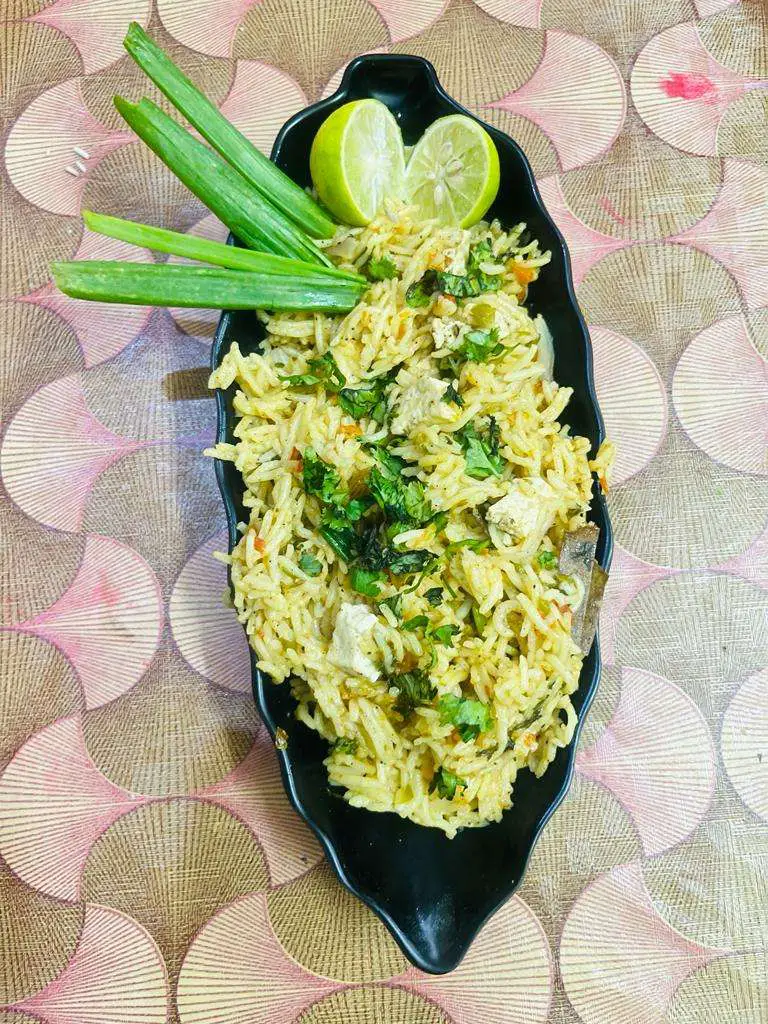
Good ��
Thanks for your feedback. We are very glad that you like our recipes.
Great!!
Thanks for your feedback. We are very glad that you like our recipes.
😋 😋 😋
Thanks for your feedback. We are very glad that you like our recipes.
Grt dish
Thanks for your feedback. We are very glad that you like our recipes.
Very tasty
Thanks for your feedback. We are very glad that you like our recipes.
Good blog
Thanks for your feedback. We are very glad that you like our recipes.
Very tasty
Thanks for your feedback. We are very glad that you like our recipes.
Very helpful website
Thanks for your feedback. We are very glad that you like our recipes.
Thanks Everyone for your great support
Best Recipe & best blog
Thanks for your feedback. We are very glad that you like our recipes.
Doing great job… Keep it up
Thanks for your feedback. We are very glad that you like our recipes.
Very good
Thanks for your feedback. We are very glad that you like our recipes.
Delicious
Thanks for your feedback. We are very glad that you like our recipes.